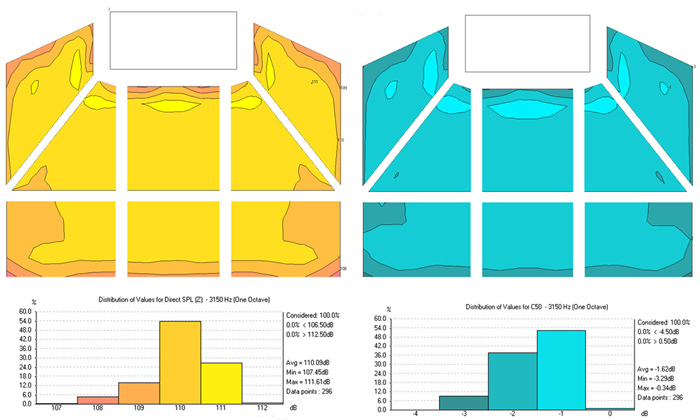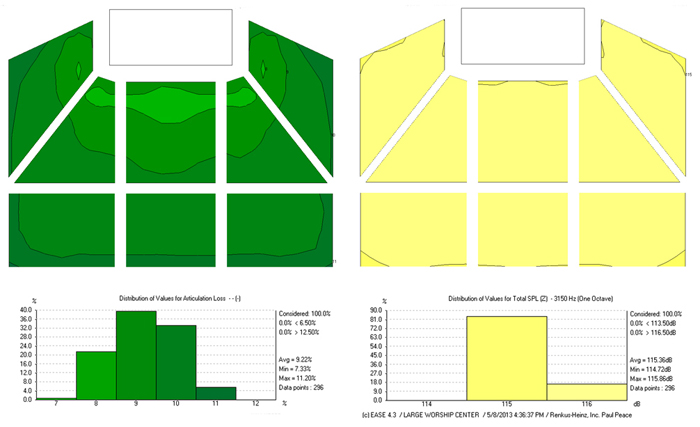
I chose to put a fill loudspeaker above this area to provide better audio cues to the stage and visual media. A 22/6 module was used to fill the area with precision.
After all arrays were configured, individual gains were finalized, along with array rigging angles. Once the detailing was complete, I could have stopped here. General mapping was good.
Experience, however, has shown that in large rooms the areas near exits experience higher noise levels than the central seating areas.
In addition, and by design, these areas have a natural fall-off from the main loudspeakers. The best solution is to provide overhead fill to these seats.
This is by no means a new concept, but VARIA allows use of the same loudspeakers for these fills (in this case, six 22/12 units) as were used in the primary arrays. The sonic improvement is dramatic.
The finished system results are depicted in Figures 5, 6, 7, and 8 showing the DirSPL, C50, %ALcons, and SumSPL maps at 3 kHz (3 octaves).
It should be noted that the increase in overall level near the stage was intentional, and there’s no stage front fill system included in this mapping. It’s common practice in a room this size to do so, but would be a luxury in this case, not a requirement.
Returning now to the discussion of the design of the center section, it should be noted that to everyone’s benefit, line arrays have become a standard in sound reinforcement.
However, as we try to design arrays that scale ever smaller, we find ourselves in cluster design once again with a familiar requirement: each device must have constant directivity.
To make matters more confusing, arrays do well when trying to restrict pattern, but do not react well when a wide pattern is needed.
In the example here, the best seats exist in the “underbelly” area of an array — not a good place to be. New developments in DSP and onboard amplification have greatly improved the ability of arrays (small and large).
The Renkus-Heinz IC² (IC Squared) can do amazing things, and serves as a good example of what is possible and how far this technology has come. These new systems, however, are beyond the reach of many project budgets.
VARIA provides the ability to sculpt coverage patterns — complimentary to inverse square and room geometry — with no array size requirement and no special DSP. It represents a system designer’s custom loudspeaker shop in full force.
Paul Peace is senior loudspeaker engineer with Renkus-Heinz.


